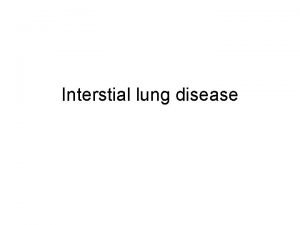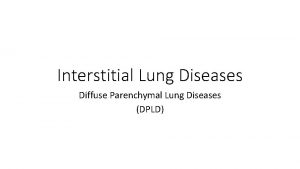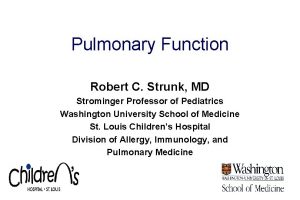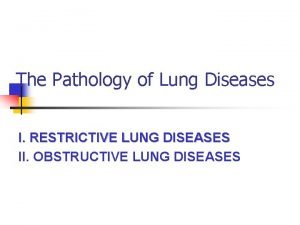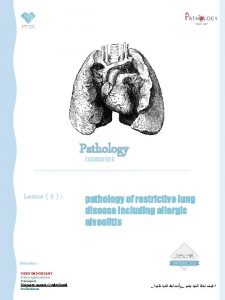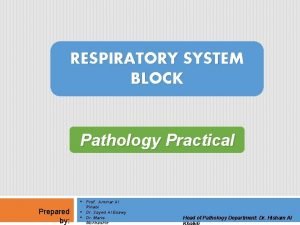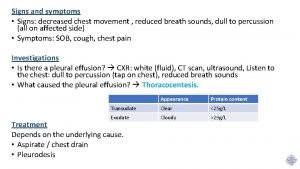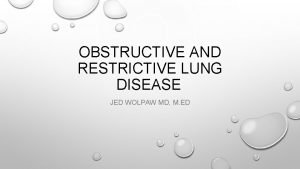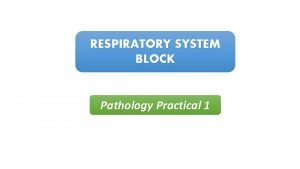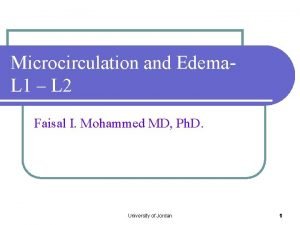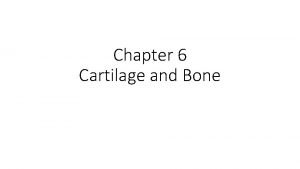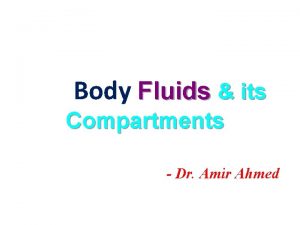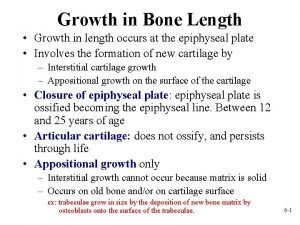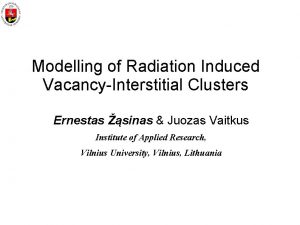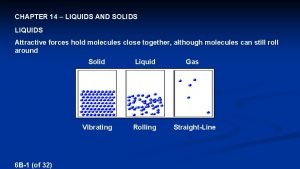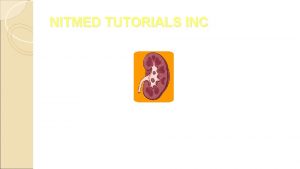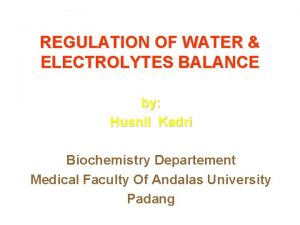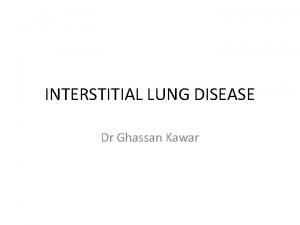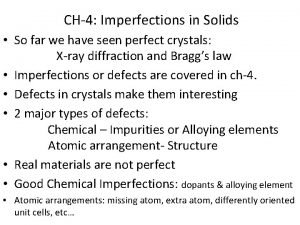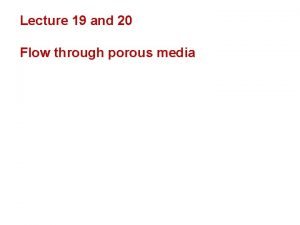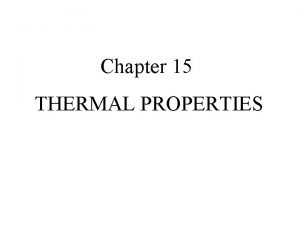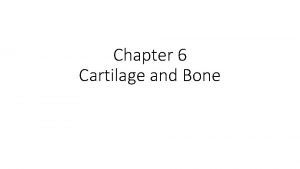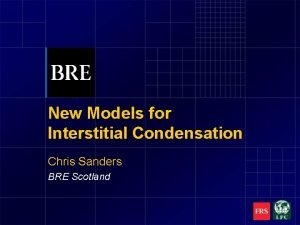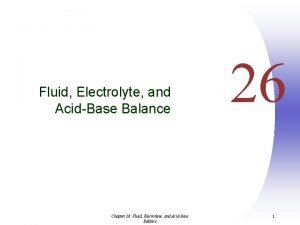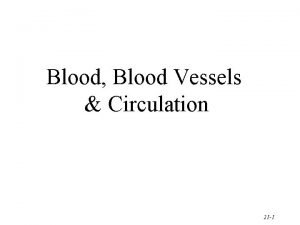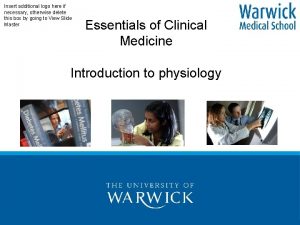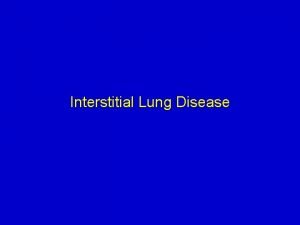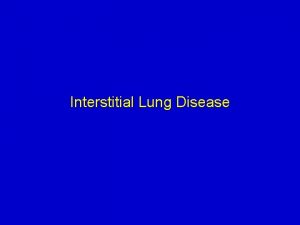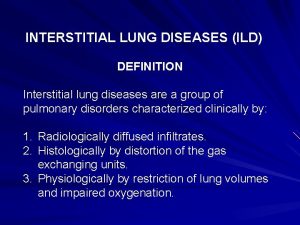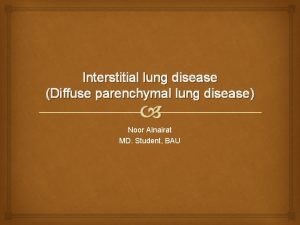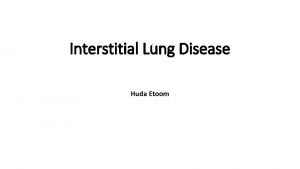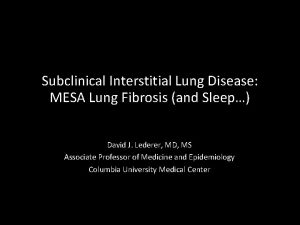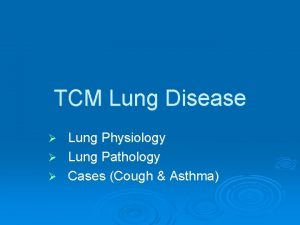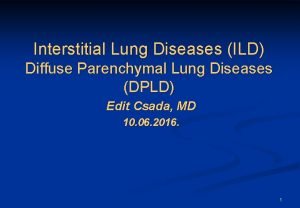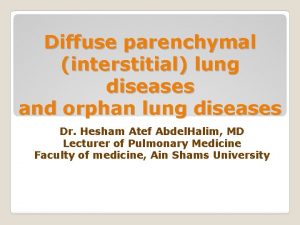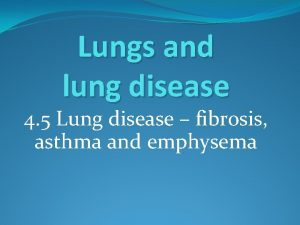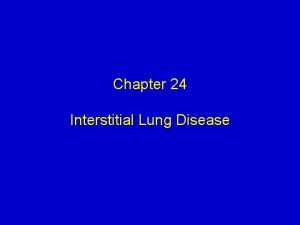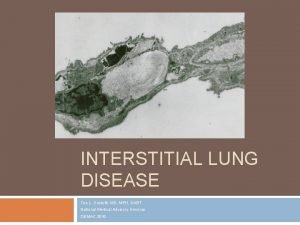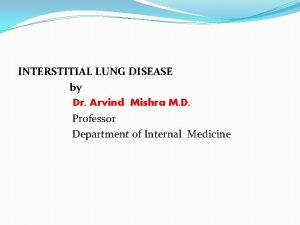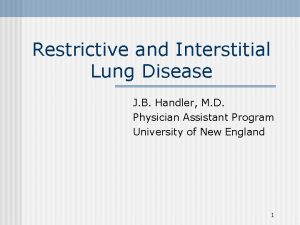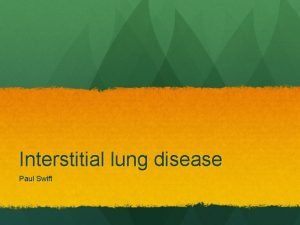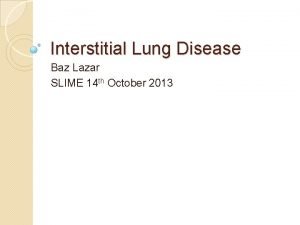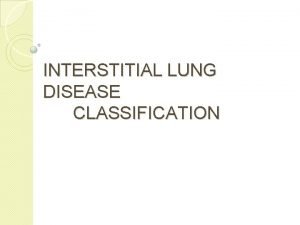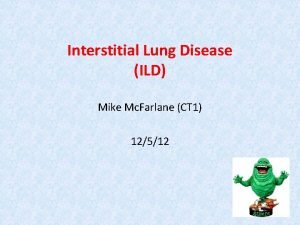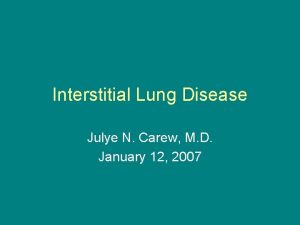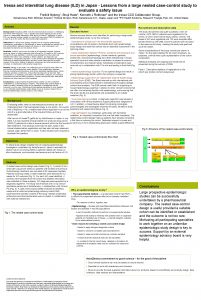INTERSTITIAL LUNG DISEASE Dr Ghassan Kawar What is





































- Slides: 37

INTERSTITIAL LUNG DISEASE Dr Ghassan Kawar




What is the pulmonary interstitium? • Anatomic space that is lined by epithelial and endothelial cells • Contains collagen, elastin, reticulin, ECM • Also in the connective tissue of the lung (interlobular septa, visceral pleura, peribronchovascular sheaths)




Epidemiology


Clinical Evaluation: History • • • • Demographics Age: IPF>50 years, 20‐ 40: CTD, sarcoid, LAM, LCH, familial Female: LAM, CTD‐ILD, Men: RA‐ILD, occupational Onset of Symptoms Timing can guide the differential (acute: COP, CTD‐ILD, chronic: IPF, sarcoid) Smoking History LCH, DIP, RB‐ILD, IPF Family History Premature graying, history of ILD Review of Systems Arthralgias, Raynaud’s, Myositis, Dysphagia/Reflux Drugs Occupational/Environmental Exposures Don’t forget OTC and illicit Birds/Mold Asbestos, Silica



Diagnostic Tests • Imaging • Pulmonary Function Tests • Laboratory • Bronchoscopy • Surgical lung biopsy






Interstitial Lung Abnormalities • Increased lung density on CT scans in patients with no history of ILD • 2‐ 10% of the population • Association with reduction in PFT, exercise capacity, development of ILD, and mortality • Refer to pulmonary




Pulmonary Function Test • • • Spirometry Predicted Observed FVC 3. 72 2. 24 FEV 1 3. 06 1. 78 FEV 1/FVC 82 79 Plethysmography TLC 5. 26 3. 38 Diffusion Diffusing Capacity 29. 01 8. 01 %Pred 60% 58% 96% 64% 28%


Clinical Evaluation: Laboratory Analysis CBC with differential Macrocytosis (telomeropathy) Eosinophilia (CEP) Autoimmune serologies HP precipitans Poor sensitivity and specificity, limited range of antigens tested Genetic testing Selected cases (e. g. BHD), emerging for FPF • Telomere length measurement Emerging • VEGF‐D Lymphangioleiomyomatosis • • •




IPF: Why is diagnosis important? • Median survival ~4 years • Acute exacerbation rate 5‐ 10% per year

Hypersensitivity Pneumonitis • No consensus diagnostic criteria – Classic imaging + good exposure – Lung biopsy • Described as acute, sub‐acute, and chronic • Over 200 exposures identified: – Typically related to mold or bird products • Treatment – Remove exposure – Prednisone +/‐ mycophenolate or azathioprine


Connective Tissue Disease • CTD • Systemic Sclerosis Rheumatoid Arthritis Diagnosis Esophageal Dilation Consider drug induced lung injury for new/worsening ILD • Dermatomyositis/Polymyositis Myositis may be subtle ILD can come first ANA can be negative • Sjogren’s Syndrome Cysts on HRCT • Lupus ILD is unsual




Conclusions • Multiple types of ILD • Consider in older patient with cough or subacute shortness of breath • Evaluation starts with high resolution CT, may need surgical lung biopsy • Important to distinguish IPF from other types of ILD as treatment differs
 Diffuse interstitial disease
Diffuse interstitial disease Ghassan issa
Ghassan issa Clipping definition in linguistics
Clipping definition in linguistics Dr hasbany
Dr hasbany Ghassan antar
Ghassan antar Uip
Uip Dpld
Dpld Difference between obstructive and restrictive lung disease
Difference between obstructive and restrictive lung disease Restrictive lung disease
Restrictive lung disease Difference between obstructive and restrictive lung disease
Difference between obstructive and restrictive lung disease Restrictive lung disease
Restrictive lung disease Enfisema pulmonar tem cura
Enfisema pulmonar tem cura What causes lungs pain
What causes lungs pain Restrictive lung disease
Restrictive lung disease Copd full form
Copd full form Bharathi viswanathan
Bharathi viswanathan Tightly attached ceiling
Tightly attached ceiling Hydrostatic vs osmotic pressure
Hydrostatic vs osmotic pressure Interstitial cartilage
Interstitial cartilage Interstitial fluid vs extracellular fluid
Interstitial fluid vs extracellular fluid Difference between intercellular and intracellular fluid
Difference between intercellular and intracellular fluid Appositional and interstitial growth of cartilage
Appositional and interstitial growth of cartilage Vacancy defect and interstitial defect
Vacancy defect and interstitial defect Particle arrangement of solid
Particle arrangement of solid Steel interstitial alloy
Steel interstitial alloy Movement of body fluids
Movement of body fluids Interstitial velocity
Interstitial velocity Acute interstitial nephritis urine findings
Acute interstitial nephritis urine findings Water balance regulation
Water balance regulation Interstitial pattern
Interstitial pattern Tetrahedral interstitial site
Tetrahedral interstitial site Interstitial velocity
Interstitial velocity Interstitial impurity atom
Interstitial impurity atom Appositional and interstitial growth of cartilage
Appositional and interstitial growth of cartilage Interstitial condensation
Interstitial condensation An atypical accumulation of fluid in the interstitial space
An atypical accumulation of fluid in the interstitial space Fenestrations
Fenestrations Impermeance
Impermeance
